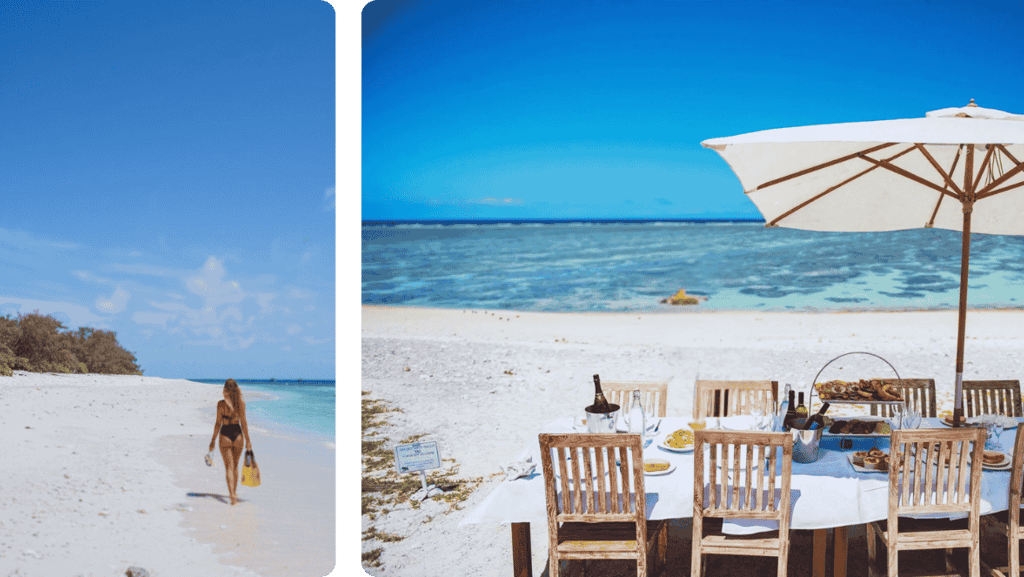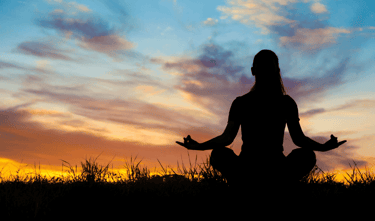Disconnect to Reconnect at These Wellness Havens
10/6/202512 min read
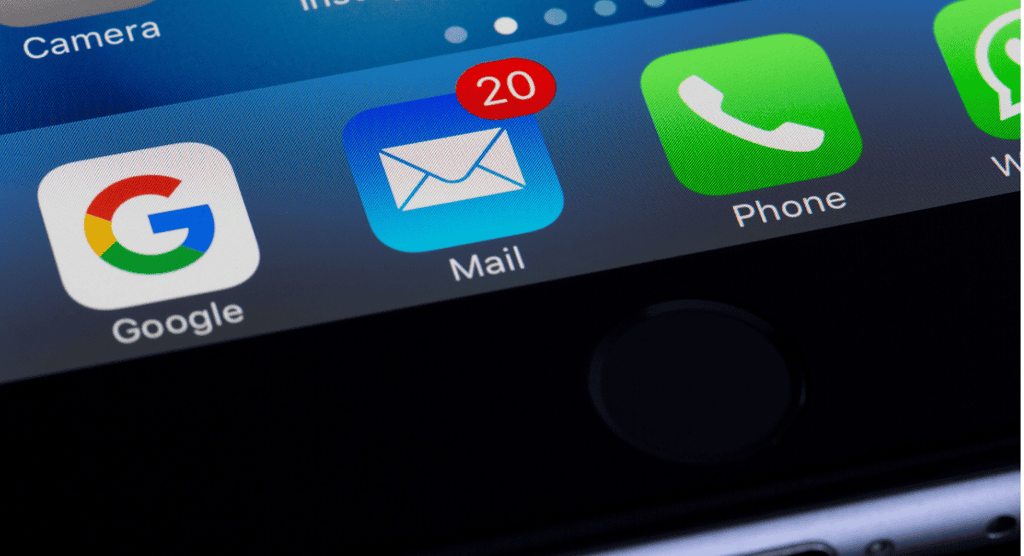

Disclosure: Some of the links on our site are affiliate links, which means that if you click on these links and make a purchase, we may earn a commission at no additional cost to you.
Endless Notifications
Constant screen time has turned digital overload into a daily reality. Many people are answering that pressure by booking unplugged holidays and screen-free getaways with immersive escapes designed to reset attention and restore balance after episodes of digital burnout.
Some of these digital detox destinations range from Mexico’s jungle-clad Grand Velas Resort to Germany’s historic La Villa Stéphanie, where world-class hospitality meets purpose-built programs that help guests step back from devices and rebuild healthy habits. Option offer nature-rich environments without sacrificing comfort, and prices span affordable weekend detox resets (from about $125) to deep, private immersions (up to roughly $3,599 for a 15-day program).
Whether it’s sunrise yoga at The Point in New York or olive-grove meditations at Mallorca’s Es Racó d’Artà, these retreats replace scrolling with restorative practices—chef-prepared meals, guided movement, and group activities that nurture creativity and connection. From Seychelles’ Avani Barbarons to Loire Valley Lodges in France, the best places don’t just remove devices: they redesign the environment so guests rediscover nature, community, and a clearer sense of life outside the screen.
Key Takeaways
Luxury wellness retreats blend premium comfort with expert-led programming to support lasting behavioral change.
Structured digital detox experiences teach boundaries for healthier relationships with technology.
Global locations—from beaches to forests—offer varied landscapes for nature-based healing.
Program lengths (typically 3–15 days) fit different schedules and budgets, from short weekend resets to longer immersions.
Top-tier amenities let guests enjoy comfort while engaging in meaningful unplugging and wellness work.
More people—especially those who’ve spent years in high-demand roles—prioritize meaningful unplugged holidays over traditional vacations.
See how to choose the right unplugged holiday for your schedule and goals in the sections below.
Discovering the Art of Unplugging
Constant connectivity has changed how many people work and unwind, often blurring the line between productive effort and burnout. Rosanna Irwin's story illustrates that tension: after years at Facebook managing global teams, she says, "Unlimited holidays became guilt trips – taking a day off felt like abandoning ship." A three-day reset on Denmark’s Samsø Island prompted a career pivot and inspired her to help create spaces for intentional disconnection.
Understanding the Need to Disconnect
Signs of overload are common: phantom phone vibrations, compulsive email checks during family time, and shortened attention spans. Workplace cultures that reward being "always-on" make genuine rest harder to achieve. Short, structured pauses—like a weekend detox—can recalibrate sleep and focus, while longer retreats sometimes trigger deeper life changes, including shifts in career priorities.
The Rise of Wellness Escapes
In response, digital detox retreats and digital wellness programs have proliferated. Unlike a typical spa weekend, these retreats combine nature immersion with behavioral coaching so participants replace screen habits with restorative routines—forest walks instead of doomscrolling, chef-prepared meals that encourage mindful eating, and guided workshops that teach device-boundary strategies. Some studies and program evaluations report meaningful reductions in stress biomarkers (for example, cortisol) after immersive stays; cite specific research when republishing.
What makes these experiences stick is the emphasis on tools and integration: guests return home with concrete plans for balanced device use, not just memories of a calm week. In short, unplugging isn’t about stepping away from success—it’s about redefining how success fits into a healthier life.
Try this small start: schedule one screen-free evening this week—no notifications, a walk outside, and a journal entry—to test how a micro-unplug can affect your sleep and mood.
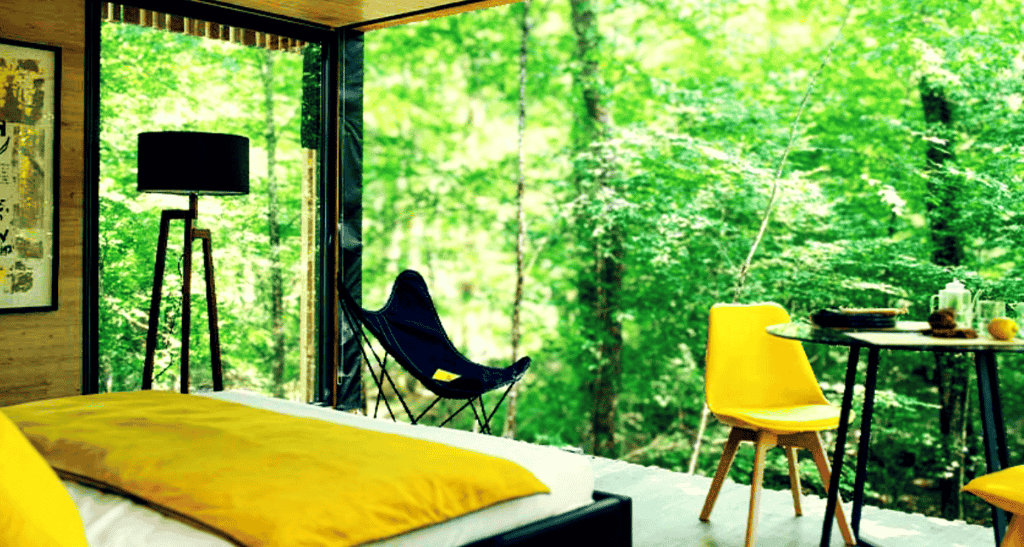

Loire Valley Lodges
Exploring digital detox retreats
The cost of perpetual online presence shows up as drained focus and fractured attention. Unlike ordinary vacations, immersive digital detox retreats are intentionally designed to replace reactive screen habits with richer experiences. "True disconnection requires replacing screen habits with richer experiences," says wellness coach Lila Marcos—and that shift is what separates a getaway from a lasting detox.
Core Elements of Effective Programs
Outstanding retreats blend environmental design, behavioral coaching, and clear device policies. Common features include device-drop check-ins or locked storage, designated device-free zones, and gradual reintroduction plans for hybrid stays. Purpose-built spaces—think bamboo-walled studios in Bali or purposefully quiet forest cabins—reduce impulse checking by design. Daily schedules often pair forest bathing or sunrise hikes with short workshops on attention management and practical tools to limit distractions.
Life-Changing Experiences
For many people the results are tangible. A San Francisco executive, identified here as Mara, credits a structured 7-day program with helping her break a long-standing smartphone habit—an anonymized example that reflects many participant stories.
"Morning yoga replaced doomscrolling – I rediscovered how sunlight feels on my skin”
she shares. Others report improved sleep, clearer thinking, and renewed creative energy after just a few days.
Teachers, CEOs, and artists find healing through days that combine focused meditation, hands-on crafts, and nature-based movement. Activities like sunrise hikes, group drum circles, or pottery sessions provide tactile, social alternatives to screen time and help retrain attention. Programs emphasize practical takeaways—personalized plans, tiny daily rituals, and checkpoints—that turn a temporary screen-free getaway into lasting habit change rather than a brief reprieve.
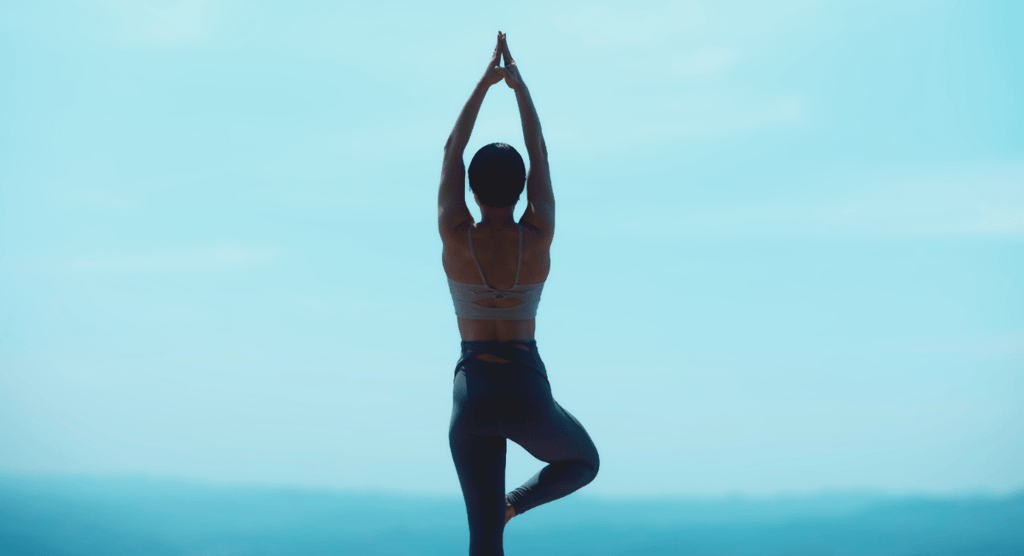

Featured Wellness Havens Around the Globe
From tropical shores to mountain hideaways, exceptional destinations show how unplugged holidays and screen-free getaways make stepping back from screens feel effortless when you’re surrounded by beauty. These curated locations combine world-class hospitality with purpose-built environments designed to help visitors rediscover life beyond notifications.
Mexico Grand Velas Resorts — coastal luxury resort: private beach cabanas, spa treatments using local ingredients, and structured wellness retreat programming that pairs relaxation with behavioral sessions. Germany La Villa Stéphanie, part of Brenners Park-Hotels & Spa — boutique thermal destination in the Black Forest offering thermal spring therapies and vineyard tours that blend European elegance with restorative pace.
Seychelles Avoni Barbarons — island resort with overwater villas and daily sunrise yoga that replaces morning scrolls with movement and nature immersion. Spain Mallorca’s Es Racó d’Artà — a Mediterranean wellness retreat set among olive groves where guided meditation and mindful walks slow time naturally.
USA, New York The Point — Adirondack Great Camp-style lodge: a luxury wilderness retreat where guests trade emails for kayaking on pristine lakes and evenings by stone fireplaces under star-filled skies. North Carolina — forest cabins and curated nature lodges (ideal for solo retreat seekers and groups) offer hiking, sound healing sessions, and quiet spaces to reset without sacrificing comfort.
France Loire Valley Lodges — countryside lodges that pair truffle foraging and vineyard tastings with tech-free bonding activities; these experiences engage the senses often numbed by screens and help guests reclaim a more grounded rhythm of life.
See booking tips and timing recommendations for these locations in the “Curating Your Journey” section below.
Benefits of Disconnecting in a Digital Age
Our hyperconnected routines quietly erode attention, sleep, and meaningful presence—until we press pause. Structured digital detox breaks unlock measurable and experiential gains across wellness domains: improved sleep, lower stress, clearer thinking, and stronger social bonds. (When republishing, add citations for specific study figures.)
Mental Clarity and Emotional Rejuvenation
Constant alerts fragment attention and make sustained focus rare. Device-free days create quiet environments where the mind can regroup; many retreat participants report faster recovery of concentration and creativity. Rather than vague metaphors, describe concrete outcomes: people often notice fewer intrusive thoughts, improved task focus, and renewed creative ideas within days of a detox stay.
Emotional healing also becomes possible without the habitual distraction of feeds. When scrolling stops, some guests safely process long-avoided feelings; programs teach grounding techniques—breathwork, journaling prompts, short meditations—that help integrate those experiences after the retreat. Framing these outcomes as participant-reported and clinically supported where applicable preserves accuracy.
Reconnecting with Nature and Community
Time outside resets circadian cues more effectively for many people than blue-light mitigation alone. Simple nature exposure—morning sunlight, forest walks, or lake swims—helps stabilize sleep–wake rhythms and reduces physiological arousal. Participants regularly report a renewed connection to their physical body: tasting food more vividly, noticing tension release, and sleeping more soundly.
Shared, device-free meals and group activities revive social skills dulled by digital shortcuts. Many guests describe deeper conversations while stargazing or cooking together; these social rituals often outlast the stay and translate into stronger relationships at home. Retreats that emphasize communal rituals and art- or nature-based experiences tend to yield more durable social benefits.
Most people leave with practical integration plans—screen curfews, short nature breaks during workdays, and scheduled movement or breathing exercises—to maintain gains. As stress markers drop for many participants, priorities shift: one guest turned a cramped balcony into a small urban sanctuary, illustrating how small environment changes can support long-term healing.
Try this mini-test at home: commit to a 12-hour screen-free window (even one evening), include a 20-minute outdoor walk and a no-phone meal, then journal how sleep and mood feel the next day. Small experiments like this are a low-cost way to sample the healing benefits of longer unplugged holidays or detox retreats.
"Find renewal through structured retreats after the exhaustion and burnout of an always-on work life.”
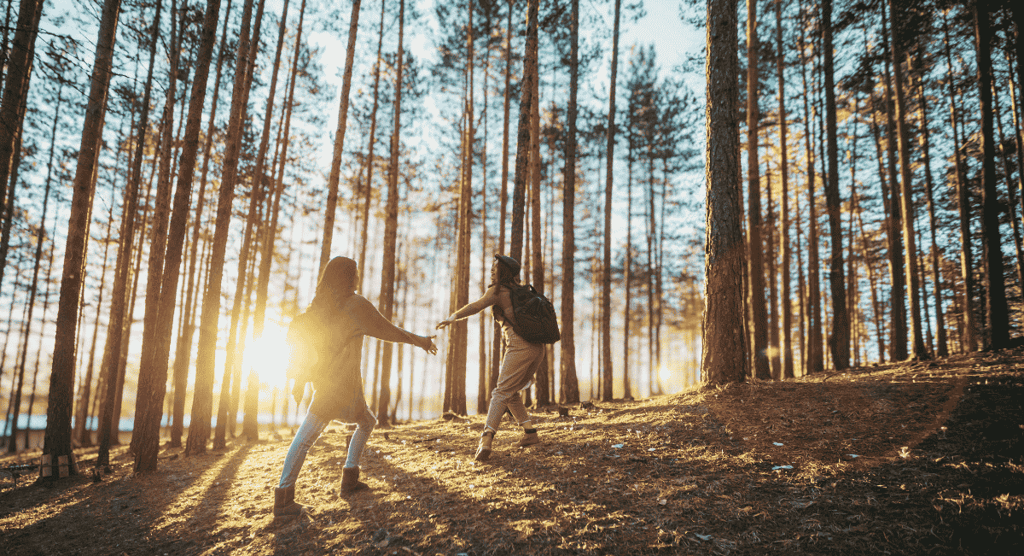

Wellness Activities and Experiences at Our Retreats
True rejuvenation comes from curated experiences that replace daily stressors with restorative practices. Our retreats blend ancient traditions and modern science to recalibrate both body and mind—each activity is a practical step toward sustainable balance after a digital detox.
Yoga, Meditation, and Mindful Movement
Morning sessions open with yoga flows that target tech-related tension: sequences to lift rounded shoulders, release neck knots, and re-open the chest. Instructors offer scaled options so people at every level can participate. "These movements feel like hitting a reset button for my posture," a recent guest reports.
Meditation programming meets modern attention spans: short focus exercises lead into progressively longer sits, with nature sounds or guided imagery to ease the transition from constant stimulation. Practical takeaway: try a 10-minute guided breathing practice at lunch to interrupt reactive checking and re-center your mind. Evening mindful walks—through lavender fields, along shorelines, or under forest canopies—close the day and anchor embodied awareness.
Sound Healing and Holistic Practices
Sound healing sessions using crystal singing bowls, gongs, or tuned percussion are offered at many holistic retreats as participant-reported stress-reduction tools; describe these results as subjective and, where possible, supplement with research citations. Guests often describe immediate calm after a gong bath or singing-bowl session—language like "a full-body system reboot" captures that experience without asserting clinical cure.
Hands-on bodywork complements somatic practices: myofascial release, therapeutic massage, and movement therapy address the physical effects of screen fatigue. Breathwork workshops teach practical techniques to reverse shallow, device-driven breathing patterns. Creative arts stations—clay modeling, watercolor, or tactile crafts—offer sensory alternatives to scrolling and foster embodied creativity.
Sample daily schedule (example):
7:00 AM: Sunrise yoga (30–60 minutes)
8:30 AM: Mindful, chef-prepared breakfast (farm-to-table ingredients)
10:00 AM: Forest walk or movement class
12:30 PM: Guided lunch + mindful-eating exercise
3:00 PM: Workshop (attention management / journaling) or sound-healing session
6:00 PM: Communal dinner (device-free)
8:30 PM: Evening reflection circle or silent walk
Every activity is sequenced to support integration: evening circles and exit coaching help guests map small, actionable rituals (5–10 minutes/day) they can maintain at home. For example: a lunchtime breathing break, two weekly outdoor walks, and a nightly 20-minute tech curfew. Consider offering a downloadable "30-day post-retreat plan" to help guests translate retreat practices into daily routines.
Curating Your Digital Detox Retreat Journey
Crafting an effective unplugged holiday starts with recognizing that meaningful disconnection is a guided process—not just switching off devices. Leading wellness retreat providers and digital wellness programs now offer tailored pathways that help you reset while keeping the comforts of curated hospitality.
Customized Programs and Tailored Experiences
Specialists design programs to match your goals and readiness. Options typically span brief intro stays to deep immersions: choose a 2–3 day introductory reset if you want a gentle taste of a screen-free getaway, a 7–10 day comprehensive immersion for behavior change, or a 12–15 day private experience for profound transformation. Pre-trip consultations set intentions, address worries about unplugging, and create a personalized plan for integration back home.
Table note: price ranges vary by location, season, and included services—verify rates with each retreat when booking.
How to Choose: Quick Checklist
If you want a low-risk test: pick an introductory detox or a weekend screen-free getaway.
If you want lasting habit change: choose a week-long comprehensive immersion with behavioral coaching and post-retreat integration tools.
If you need privacy and deep work: opt for a private 12–15 day retreat with one-on-one mentoring.
Seamless Booking and Dedicated Support
Transparent pricing, flexible cancellation or rescheduling, and dedicated advisors reduce planning friction. Many U.S. venues now offer rescheduling options; confirm specific policies when you inquire. Advisors help select locations, accommodation types (wilderness cabins, luxury resorts, boutique lodges), and therapeutic approaches—matching your mission, budget, and travel constraints.
Post-retreat integration is key: reputable retreats provide take-home plans, community access, and tools such as screen-time trackers or accountability groups to sustain gains. To get started, book a short planning call (15 minutes) with an advisor to map the right program length, estimate total hours of on-site coaching, and receive a pre-departure checklist that makes unplugging less stressful.

Loire Valley Lodges
Conclusion
Real transformation often begins the moment we swap scrolling for self-discovery. The curated havens profiled here offer more than short-term relief—they provide structured environments where digital detox work, guided experiences, and healing practices can take root and produce lasting change.
You'll read about CEOs rediscovering patience on forest walks and parents relearning playful presence through pottery classes. This journey from exhaustion to renewal is familiar to many people: whether through sunrise yoga, sound healing, or chef-crafted meals, participants return home with practical tools to protect their peace long after their stay.
Modern travelers increasingly choose unplugged holidays and screen-free getaways that nourish rather than numb. By prioritizing mindful experiences over constant digital chatter, people can rewrite their relationship with technology—and with themselves. Those ripple effects touch work, relationships, and personal growth.
Your path to better balance can start small: book a short intro retreat, try a weekend detox, or adopt a nightly tech curfew. Ready to take the next step? Start planning your unplugged holiday with a quick checklist, or book a 15-minute consult with a retreat advisor to pick the right duration and place for your goals.
Top 10 Digital Detox Retreats
(No specific order)
(Mexico)
(Italy)
(Germany)
(Seychelles)
(Spain)
USA, New York)
(Queensland, Australia)
(France)
(USA, San Diego)
(Indonesia, Bali)
FAQ
What types of activities can I expect at these wellness programs?
Typical offerings include:
Sunrise yoga and guided meditation sessions (short, beginner-friendly options available).
Forest bathing, guided nature walks, and outdoor mindfulness practices.
Sound healing (crystal bowls, gongs), creative arts (clay, watercolor), and hands‑on workshops.
Mindful meals—farm-to-table or chef-prepared menus with attention to dietary needs.
Optional holistic therapies such as massage, reiki, or acupuncture depending on the retreat.
How do I choose the right program duration for my needs?
Quick guidance:
2–3 days: Introductory reset — a low-risk way to test a screen-free getaway.
3–7 days: Deeper reset — allows habit testing and clearer short-term benefits.
7–10+ days: Comprehensive immersion — best for behavioral change and lasting integration.
Recommendation: match duration to your goals and available time. See “Curating Your Journey” for planning tips and pre-departure checklists.
Are these experiences suitable for solo travelers?
Yes. Many retreats welcome solo retreat participants and design programming to balance connection and privacy. Practical tips for solo travelers:
Book a pre-arrival call to set expectations and request a roommate preference if desired.
Bring small comforts (a journal, a favorite book, earplugs) and share mobility or medical info with staff.
Join group activities at your pace—many people find community quickly through shared meals and workshops.
Can I maintain work commitments during a stay?
Most programs encourage full disconnection for maximum benefit, but options exist:
Ask about “hybrid” packages that allow scheduled, limited tech access in designated spaces.
Consider delegating or scheduling essential work around your retreat days to protect the experience.
Discuss specific needs with the retreat advisor before booking to find the right balance.
How do I prepare mentally for a tech-free environment?
Practical prep steps (1–2 weeks before):
Gradually reduce screen time—try a nightly tech curfew or one screen-free evening per week.
Use apps (e.g., Freedom, Ofttimes) or built-in device settings to limit notifications ahead of travel.
Pack analog items: journal, paperback, sketchbook, reusable water bottle, and comfort items.
Are dietary restrictions accommodated at these havens?
Yes. Most reputable wellness retreats and detox retreats accommodate dietary needs—gluten-free, vegan, Ayurvedic plans, and more. Tip: disclose restrictions when booking and ask whether nutritional counselling is available as part of the program.
What post-retreat resources help maintain mindfulness habits?
Common post-retreat supports include:
Take-home toolkits with suggested routines, recipes, and short guided practices.
Access to virtual communities or alumni groups for accountability and peer support.
Optional follow-up workshops or coaching sessions to reinforce integration.
Look for retreats that offer clear post-stay plans so the benefits of your experience continue at home.
Follow Us
Copyright © 2025. All rights reserved.
We respect your inbox and will never spam!
Join The Community
Receive the latest wellness travel updates and tips.

